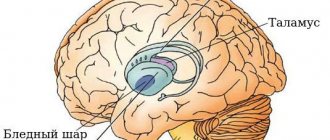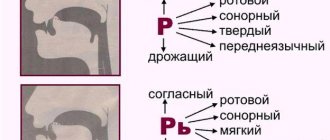Dysphonia is a voice formation disorder in which the quality of the voice (pitch, strength, timbre) is impaired, as a result of which it becomes defective - weak, poorly modulated, hoarse, and so on. Occurs as a result of organic or functional disorders of central or peripheral origin. The complete absence of voice, in which only whispered speech can be preserved, is called aphonia.
Main manifestations
An increase or decrease in tone in the vocal folds, incomplete closure of the glottis, tonic muscle spasm of the larynx and convulsive approach of tense vocal folds, discoordination in the work of the external and internal muscles of the larynx, vibrating voice, confusion of speech breathing, discomfort in the throat.
The heterogeneity of forms of voice disorders determines the diversity of their clinical manifestations. The differences between them are due primarily to the nature of the disorder (organic or functional, congenital or acquired); location and size of the lesion. The specifics of voice dysfunction in each form of Dysphonia (hypotonic, hypertonic, hypo-hypertonic, mutational, spastic) are also determined by: duration of the disorder (short-term or persistent changes), degree of severity (severe, moderate, mild), stage of the disease (early or late recovery ), pathogenetic mechanisms (nature of the disorder).
Voice disorders. Dysphonia, Aphonia, Phonosthenia.
After working with a psychiatrist, preparation for breathing work begins. If the laryngeal nerve is damaged during paralysis, then it will be almost impossible to restore its motor function. In other cases, functional training is required. The exercises will increase the mobility of the healthy part of the larynx, and in case of paralysis, they will partially restore the mobility of the vocal fold.
The next step is to normalize physiological breathing and phonation. Classes should be aimed at normalizing breathing and begin with “blowing into a harmonica.” You need to blow slowly, inhaling and exhaling on the same note. Healthy children should start training with 1 minute 10 times a day, gradually increasing the time to 2 minutes and 15 repetitions per day. If you feel dizzy, you should reduce the exercise time to 15-20 seconds.
This activity lengthens the exhalation, and the uniform movements of inhaled and exhaled air massage the larynx, thereby increasing the mobility of the healthy part of the larynx and activating the paralyzed part. In combination with “blowing into a harmonica,” breathing exercises are recommended that train extended exhalation:
Complex A. Sit straight in a chair or stand up:
1) Take a quick shallow breath and then a long exhale;
2) Inhale through your nose and exhale through your mouth;
3) Inhale through your mouth, exhale through your nose;
4) Inhale and exhale with only one half of your nose, then the other;
5) Inhale through one half of your nose and exhale through the other;
6) Inhale through your nose and then exhale slowly with increasing force at the end;
7) Inhale through your nose, exhale through loosely pursed lips;
 Inhale through your nose, exhale through your nose while holding your breath.
Inhale through your nose, exhale through your nose while holding your breath.
Do not start doing breathing practices and exercises right away so as not to overload the patient. Do breathing exercises for about a week, and then add exercises for the muscles of the neck and larynx.
Complex B. To perform the exercises described below, you need to sit up straight:
1) Place your hands in a lock at the back of your head, tilt your head back and apply slight resistance with your hands;
2) Clench your hands into a fist and rest your hands on your chin, then tilt your head forward, providing resistance with your hands;
3) Cover your ears with your palms, then tilt your head towards your shoulders with resistance from your hands;
4) Squeeze your jaws, and then move your lower jaw down, to the sides, forward;
5) Puff out your cheeks;
6) Use the tip of your tongue to reach the roof of your mouth;
7) Raise your palate when you yawn.
The above workouts are very easy to do. It is recommended to perform them 6 times during the day, repeating each approximately 5 times.
When combining exercises with a speech therapist and classes to establish diaphragmatic breathing, the reflex cough will disappear, exhalation will significantly lengthen and weak oscillatory movements of the paralyzed part of the larynx will appear. The next step is exercises for voice coordination. The essence of these exercises is that the vibrations of sound affect the mechanism of voice formation. With regular practice, the correct acoustic effect is achieved, which is what voice production consists of.
The correction begins with the pronunciation of the letter {m}, which allows you to establish the correct phonation.
Exercise 1 . Pronounce the sound slowly and briefly, directing it so that it “hits” the roof of your mouth, thereby causing resonance. After a couple of training sessions, the phonations will become longer and the voice will sound clearer. When the exercises no longer cause difficulties, proceed to the pronunciation of open syllables.
Exercise 2 . First, pronounce one sound {m}, then alternate vowels with this sound, for example: ma, mo, mu, me, we. At the same time, sharply lower your lower jaw. To consolidate the result, after a couple of lessons, you need to pronounce the syllables, with the emphasis on the second word.
Exercise 3. Pronounce the following syllables: - ma-ma na-na; - ma-mo na-no; - ma-moo na-well and so on.
Exercise 4 . Say the following syllables: mom-mama-mama; nana-nana-nanana and so on.
When the syllables sound loud and full, you can move on to the next task. Exercise 5. Say the sound {th} in combination with vowels
Repeating vowels on a hard attack has a positive effect on the closure of the vocal folds. Pronounce the vowels briefly and firmly, and the sound {th} for a long time: ay... yai..., oh... her..., uh... yu..., hey... her...
After the above activities, coordination of breathing and voice production is necessary. To achieve this, pronounce vowel sounds in one exhalation. Exercise 6 . Pronounce syllables with vowels, for example: a, ao, ay, ae, ai, aou, aoe, aoi, aouei, aoui, etc.
The child must repeat the syllables, first after the speech therapist, then independently.
Pronouncing the combinations easily and without complaints, you can move on to the next stages of treatment - working on the restored voice. To work it out, the following syllables are rehearsed: ma, mo, mu, me, we. Gradually starting phrasal speech and reading.
When working with speech material, it is recommended to practice vocals. Exercises will help strengthen your voice and increase sonority. You can sing triads, melodies without sharp transitions or scales.
When the voice is restored, it sounds loud, accompanied by organized breathing, and there is no unpleasant sensation in the throat. During the examination, the vocal folds close, and their vibrations are visible on the affected part of the larynx.
The duration of rehabilitation work lasts up to 4 months, the duration of treatment depends on the severity of the disorder and the time of start of classes.
Is it possible to restore voice function with Dysphonia?
To restore voice function, the help of a speech therapist is needed. During a diagnostic examination, a specialist determines which aspects of voice-forming activity are impaired; draws up an individual recovery program; conducts individual classes (procedures), including breathing exercises, speech and vocal exercises, speech therapy massage, vibration stimulation of speech and neck muscles. If necessary, initiates drug therapy (consultations with a neurologist, psychotherapist). The methodology and duration of classes are determined individually.
The sooner the patient is referred to a specialist for help, the sooner he will reach the maximum level of social functioning, thus improving the quality of life.
Speech therapy service of the State Clinical Hospital named after. S.S. Yudina
Functional dysphonia
Functional dysphonia is diagnosed when the vocal cords cannot close without inflammation. This condition is most often caused by neurological, endocrine or psychological disorders. There are different types of this form of the disease:
- Hypotonic dysphonia. The tone of the vocal folds decreases and they do not close completely. The voice weakens and hoarses. Often occurs in older people due to age-related changes.
- Hypertonic dysphonia. The vocal folds have increased tone and are completely closed. Because of this, constant tension is formed in the abdominal and neck muscles. Pain and hoarseness develop in the larynx, and the patient constantly feels the urge to cough.
- Hypo-hypertonic. Characteristic features include relaxation of the vocal cords and tension of the vestibular cords. The voice roughens and becomes choked. The mouth feels dry and breathing may become uneven.
- Spasmodic dysphonia. It is formed as a result of psychological trauma as a result of prolonged overstrain of the muscles that are involved in inhalation and sound production. Speech is unintelligible, trembling, hoarseness, distortion and unclear sounds appear. This form can develop in parallel with other diseases in which there is excessive muscle tension.
- Psychogenic. Appears after long-term psychological or emotional stress, such as stress or depression, fears. The voice is hoarse, the emotional state is unstable.
- Mutational. Formed in adolescents during puberty, due to mental disorders in adults. There is a change in the voice for a long time with an uncontrollably changing tone.
Survey
Patients who have problems with their voice should visit an otolaryngologist-phoniatrist. Also, if indicated, consultation with a neurologist, endocrinologist, or psychologist is necessary. To clarify the diagnosis you will need:
- endoscopy of the larynx;
- acoustic voice analysis;
- electroglottography;
- electromyography;
- blood analysis;
- bacterial culture from the nasopharynx;
- biopsy;
- tracheoscopy.
It is also necessary to be examined by a speech therapist. For functional dysphonia, treatment is prescribed by a phonopedist. Diagnostics will help to clearly determine the subtype of the disease, which is important for determining treatment tactics. Our Center’s specialists are ready to accept patients with this disease and provide the necessary assistance.
Etiology
The causes of voice loss in children are as follows:
- constant imitation of car or steam locomotive whistles;
- overstrain of the vocal cords during screaming;
- hypertrophy of adenoid tissue;
- imitation of the voices of fairy-tale characters.
Factors contributing to the development of functional dysphonia:
- laryngitis in acute form, especially recurring;
- systematic overstrain of the vocal cords;
- disruption of the innervation of the muscular structures of the larynx in various pathologies of the nervous system.
Factors in the development of organic dysphonia:
- tumor-like formations in the lung tissues, which can put pressure on the laryngeal nerve fiber;
- papillomas;
- laryngitis that has become chronic;
- traumatization of the larynx during surgical intervention in this area;
- benign and malignant laryngeal tumors.
What is Dysphonia? Causes and methods of treatment.
Sazhin Alexander Valerievich – PhoniatristHead of the Department of Otorhinolaryngology
Specialty: phoniatrist, otorhinolaryngologist, ENT surgeon, otoneurologist.
Education: 1991 - Graduate of the Pediatric Faculty, Perm State Medical Institute, Perm. 1992 - internship in pediatrics, Perm State Medical Institute, Perm. 1995 – primary specialization in otorhinolaryngology, Novokuznetsk State Institute for Advanced Medical Studies, Novokuznetsk. 2003 – thematic improvement in pediatrics, State Educational Institution of Higher Professional Education Perm State Medical Academy named after. E.A. Wagner (PGMA), Perm. 2003 – thematic improvement in clinical lymphology, State Educational Institution of Higher Professional Education Perm State Medical Academy named after. E.A. Wagner, Perm. 2003, 2008, 2011, 2013 – thematic improvements in otorhinolaryngology, Perm State Medical Academy, Perm. 2013 – practical improvement on the topic “Functional endoscopic rhinosinus surgery”, Kazan State Medical Academy, Kazan. 2012-2014 – residency in the specialty “Otorhinolaryngology”, Perm State Medical Academy. 2015, May - IV Russian master class “Modern functional rhinosurgery”, Moscow, Federal State Budgetary Institution “Polyclinic No. 1”, Department of Administration of the President of the Russian Federation. 2016, November – educational and practical master class “Otoneurology. Modern methods of diagnosing dizziness with a practical course,” Department of Otorhinolaryngology, Russian National Research Medical University named after. N.I. Pirogov (Russian Research Medical Institute named after N.I. Pirogov), Moscow. 2021, October - thematic improvement in phoniatrics at the FMBA of Russia (Federal Medical and Biological Agency of Russia), Moscow. 2021, November – master class “Otoneurology. Modern methods for diagnosing dizziness", Department of Otorhinolaryngology, Russian National Research Medical University named after. N.I. Pirogova, Moscow. 2021, May – VI Russian master class with international participation “Modern functional Rhinosurgery”, Moscow.
Main services:
- reception of adults and children from 0+;
- diagnosis, treatment and prevention of diseases of the vocal apparatus;
- endoscopic methods of diagnosis and treatment of ENT organs;
- surgical treatment of the nose, paranasal sinuses, larynx, pharynx;
- reconstructive surgery of ENT organs;
- radio wave surgery, cryotherapy.
Self-medication
Self-medication often leads to complications that may require surgery. Traditional medicine can only complement therapy aimed at suppressing the parasite. Along with this, the patient is prescribed a diet. It consists of eliminating foods from the diet that irritate the mucous membrane. This list can include all salty, peppery and spicy dishes that are served hot.
You can restore your voice in the absence of an inflammatory process on your own. Plant extracts that have a sedative effect (valerian solution or motherwort decoction) will help relieve nervous tension.
In case of vocal cord dysfunction, for example, after a football match, their rehabilitation will be facilitated by raspberry or blackberry juice and eggnog with the addition of a tablespoon of cognac. After taking them, it is recommended to remain silent so as not to strain the ligaments. Speaking in a whisper is not recommended, as this puts additional stress on the muscles of the larynx, which can only worsen the situation. If talking cannot be completely avoided, you should speak more slowly than usual. All words must be pronounced clearly.
Treatment
A throat treatment regimen, which can be obtained during examination and diagnosis of the disease by doctors at the Ear, Nose and Throat Clinic, will help restore the functioning of the vocal cords.
Main components of treatment:
- rinsing with furatsilin solution;
- irrigating the pharynx with anti-inflammatory sprays;
- physiotherapy (inhalations, electrophoresis, exposure to laser radiation).
Causes of hypotonic dysphonia
The reasons for this type of voice disorder are different. The most common is VSD, the so-called vegetative-vascular dystonia, incorrect vocal technique, vocal stress, osteochondrosis, hypothyroidism. Therefore, it is necessary to look for the cause of the formation of hypotonic dysphonia. After determining the cause of the disease, the doctor will prescribe individual treatment, including drug therapy, physical therapy and pedagogical correction. Teachers, i.e. phonopedists work very seriously on voice correction as part of the treatment process.
3. Symptoms and diagnosis
By definition, dysphonia is manifested by distinct changes in timbre, volume, acoustic purity, and individually normal voice tonality.
Sometimes, depending on the etiology (inflammation, laryngospasm), there is more or less painful phonation and swallowing, as well as a stridorous (noisy whistling) component in breathing. Patients with hypotonic dysphonia often notice fatigue of the vocal apparatus.
Diagnosis is carried out through careful collection and analysis of complaints, general anamnestic information, and data on the dynamics of the condition.
Physical methods include laryngoscopy, x-rays, ultrasound, tomographic studies, laboratory tests, phoniatric tests.
As necessary, specialized specialists (endocrinologist, surgeon, psychoneurologist, etc.) are involved in the examination, as a result of which a patient who turns to an otolaryngologist often must be redirected for treatment to another doctor.
About our clinic Chistye Prudy metro station Medintercom page!





